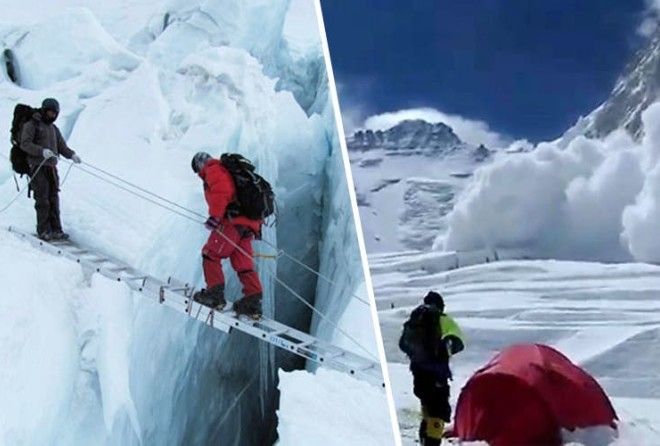Lying in the Tibetan region, Mt. Everest has seen both glory and failure. As early as 1953, climbers have tried reaching the summit of Mt. Everest, but it is only recently that more and more climbers have seen success. Thanks to the advancements in climbing technology and equipment, the seemingly impossible task now feels easier, even for a bit.
Throughout the course of history, hobbyists and climbers alike are learning more and more about Mt. Everest and slowly but surely, we’re beginning to figure out every secret the mountain holds. Some of these secrets are best kept hidden, though. Here are 15 shocking things you didn’t know about climbing Mt. Everest.
15. Your Baggage Is Going To Be Heavy
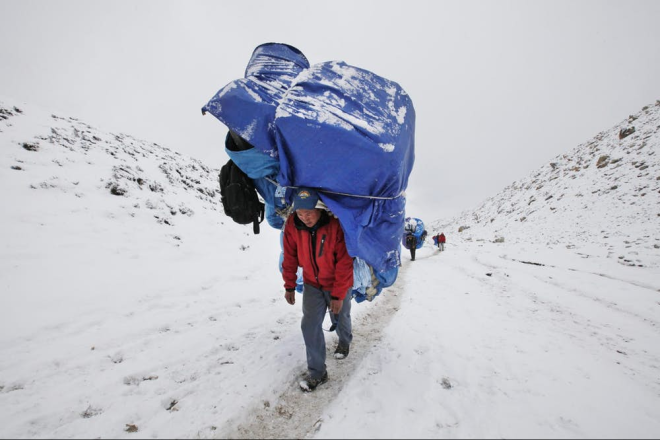
Going up the mountain requires a ton of physical and mental preparation. There’s a reason why more than 200 bodies are scattered on Mt. Everest, and it’s best to not join the ranks of the fallen climbers. To ensure a perfect climb up the mountain, the climber must not only be mentally and physically prepared, they must also come barging in with supplies that would last them several days.
There are a lot of things that climbers need to bring when climbing Mt. Everest. Aside from food, other necessities such as sleeping bags and thermos bottles are also needed. More importantly, a ton of oxygen canisters are also required. Simply put, the climber will be carrying quite a heavy load when climbing Mt. Everest. Considering how climbing up the slippery and harsh trails is hard enough already, the fact that one will be carrying a lot of stuff makes it even harder.
14. The Wind Alone Could Kill You
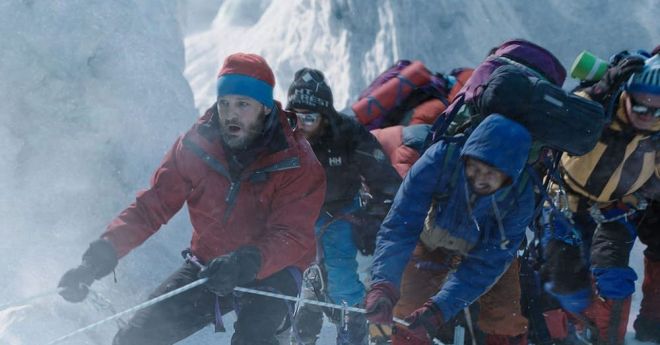
Standing on Mt. Everest is like standing at the top of the world. This sounds cool on paper but when looking at the consequences of being at the top of the world, one might think twice about climbing Mt. Everest. At the top of the world, conditions aren’t made for humans to weather. Even a gust of wind can kill an unsuspecting climber.
The winds at Mt. Everest can reach up to a staggering 200 mph! That’s faster than most cars, and if climbers aren’t well-prepared, one gust of wind could send them falling down to where they shouldn’t be falling to. Harnesses, a strong body, and a good presence of mind are required to brave the wind, but when thinking about the other hazards at the mountain, it feels kind of hard to keep our feet on the ground when the wind blows strong.
13. Climbers Can Suffer From Permanent Brain Damage Due To Lack Of Oxygen
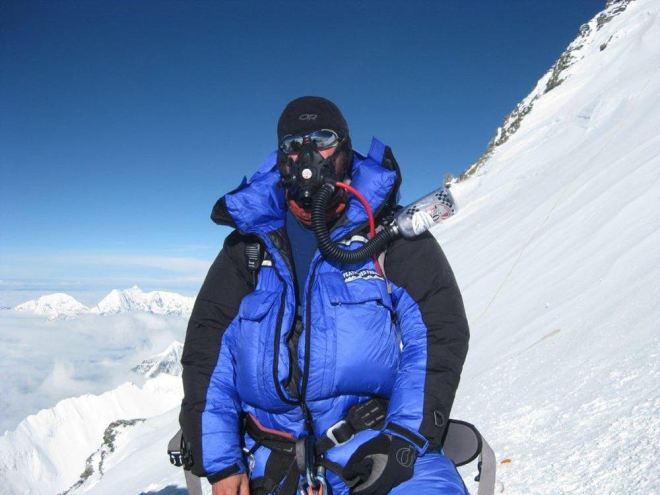
There are many factors that cause death on Mt. Everest. One of those is the fact that there isn’t enough oxygen for the human body to take in. That’s why climbers carry canisters of oxygen with them. Aside from the extreme temperatures, the lack of sufficient oxygen is one of the primary causes of death for climbers. But there’s so much more to lacking oxygen than just dying.
When the body lacks oxygen, a lot of other things happen. If there’s not enough oxygen that gets through to the brain, for instance, climbers could suffer permanent brain damage even if they make it to the summit and back down. Moreover, climbers can also experience dementia, mood swings, and so much more when they don’t get enough oxygen. Don’t be surprised if you’re packed with more oxygen canisters than you think you’ll need when you make the climb up.
12. It’s Dirty
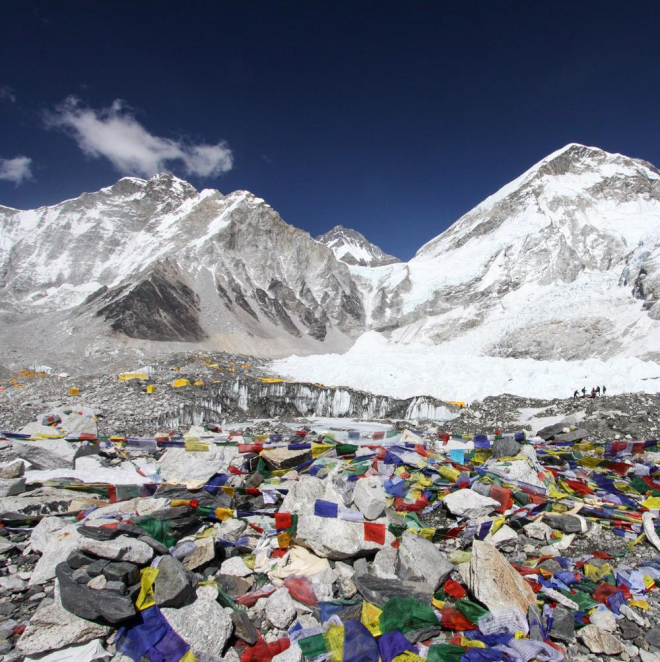
With all the climbers hoping to reach the summit, you can bet that Mt. Everest is already filled with trash. Let’s face it, trash bins aren’t going to be available midway to the summit, and the climbers are sure to dispose of any excess trash to make their luggage lighter. Oxygen canisters, food cans, water bottles, and even bodies; Mt. Everest is not a place for those who hate trash.
Despite all warnings from the sherpas and guides, climbers can’t help but litter on Mt. Everest. Seeing as there’s already a set route for climbers, the trash will accumulate more and more each year. There are groups that care for the mountain and have launched expeditions to clear out the trash, but despite their efforts, there’s still a lot of litter on the mountain.
11. Human Traffic Causes Casualties
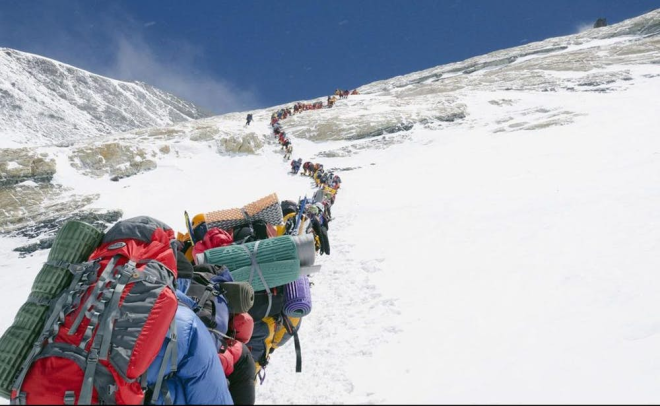
There’s a surprisingly growing number of climbers on Mt. Everest every year. This doesn’t mean the summit is easier to reach, though. The high number of climbers on Mt. Everest is causing heaps of trouble to other climbers, as it’s making the climb to the top a lot harder. The long lines at the top are making people wait in the freezing cold for more than they should have to.
German climber Ralf Dujmovits wanted to climb Mt. Everest, but after seeing how long the lines are to the summit, he decided to head back. Waiting in that line in such horrible conditions is dangerous. In that same year, it was reported that four people passed while waiting in line for the summit. The long lines have been a wake-up call to the guides and sherpas of the mountain, and they have tried to add better safety measures since.
10. People Have Gotten Into Brawls On The Way Up
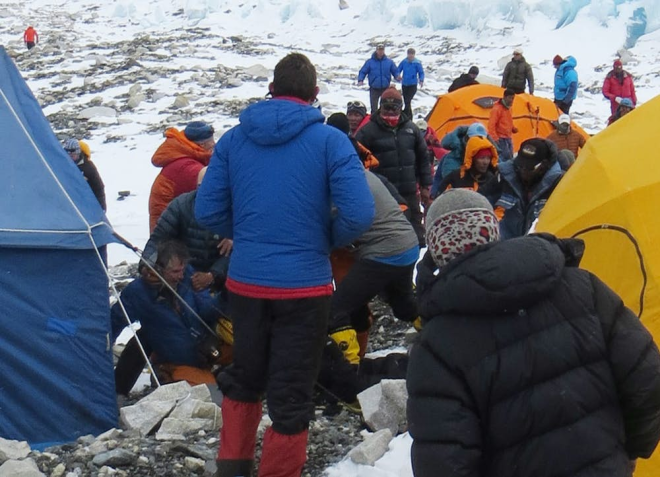
When you think about it, climbing Mt. Everest will really push a person to his limits. When climbing as a group, people will get to the peak through teamwork and teamwork alone. Unsurprisingly, not all groups that climb up to the summit have a peaceful way up. Considering how dangerous the expedition is, it’s hard to believe that people will even think about starting a brawl there.
Back in 2013, Ueli Steck, Simone Moro, and Jonathan Griffith got into an argument with the sherpas that were accompanying them on their climb. The argument led to a brawl and the two groups decided to duke it out while in the middle of the climb. One of the sherpas even threatened to kill one of them. Before things got worse than it already was, the climbers decided to run to base camp and there, they signed a peace treaty with the sherpas.
9. You Have To Pay $30K To Have Your Body Retrieved
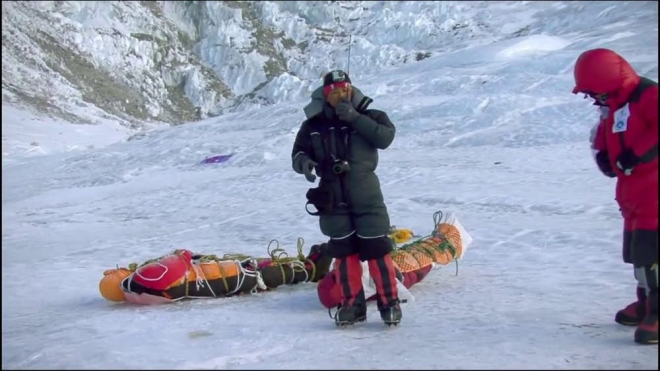
You know a place is dangerous when it’s known as the Death Zone. In this aptly named section of Mt. Everest, death isn’t something new. Climbers know this beforehand. What’s worst about the area is that it’s hard for a person’s body to be retrieved if he or she dies there. It’s a near-impossible task to retrieve a body from the Death Zone, but many still try it.
Before climbing Mt. Everest, climbers are asked if they want their body to be retrieved if they die midway. If climbers do want their bodies returned, they have to pay a hefty fine of $30,000 or more. The price is fair though, as it is a really tough job for the retrievers. The retrievers will have to use a sled to bring down the body. One wrong move and the group trying to get the body could all share the same fate as their cargo.
8. Snow Spiders

Think about how tough a creature would have to be to be able to survive in harsh conditions such as there is on Mt. Everest. Humans have a hard time getting to the peak because of the high altitude, which makes it harder to breathe, and the freezing temperatures; not something to take lightly. Despite these harsh conditions, one species of spider manages to live through it all to give humans one more thing to worry about.
The Euophrys Omnisuperstes, better known as the Himalayan jumping spider is one of the very few living things to live on Mt. Everest. Hiding in small crevices, these creepy crawlies feed on whatever creatures die on the mountain. They aren’t harmful to humans, but still, the thought of having to watch out for spiders on that mountain is scary enough.
7. Frostbite
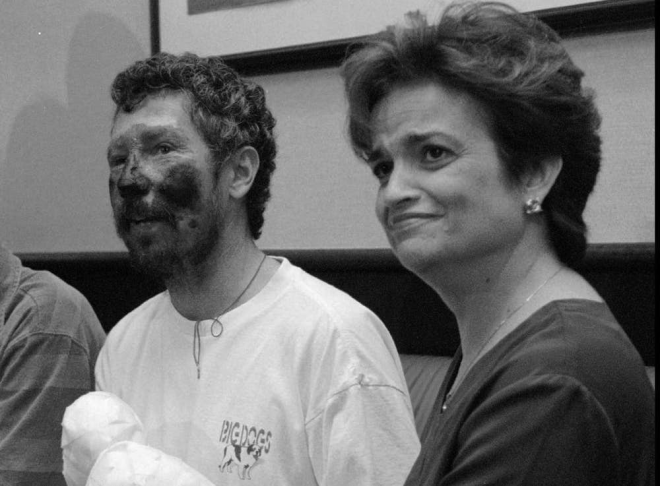
Courtesy of the blistering cold, climbers often experience frostbite. This awful condition is described as “an injury caused by freezing of the skin and underlying tissues”. In cartoons, frostbite is often depicted as something that can make a person lose his nose or other affected areas. That can actually happen, though, so it’s best to warm the frozen part that’s affected during the early stages of frostbite as soon as possible.
Not all cases of frostbite are horrible when climbing Mt. Everest, though. It starts out as a simple numbing and reddening of a body part and commonly occurs in the nose or fingers and toes. In severe cases, the affected area turns black and
6. It’s Riddled With Fallen Climbers
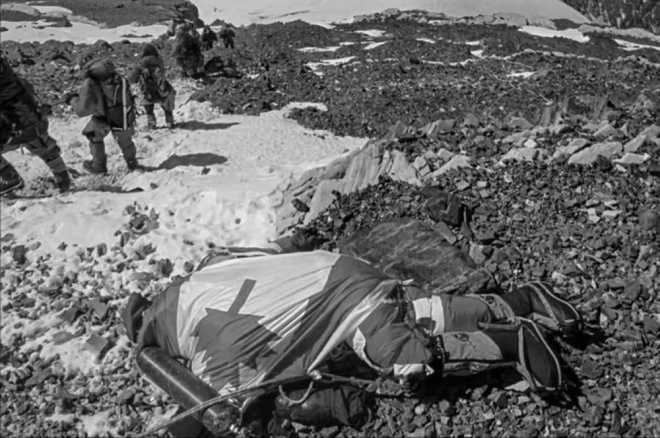
This is one fact that many may have known already. When climbing Mt. Everest, it’s normal for a person to come across the corpse of a climber who wasn’t so lucky when climbing to the top. To this day, there are over 200 corpses on Mt. Everest, and some of them have even been made into landmarks. Years ago, climbing Mt. Everest was way harder because of the lack of proper equipment and knowledge about the mountain. Climbers have it much easier now.
One of the most popular corpses climbers will get to see on Mt. Everest is that of Tsewang Poljar, better known as Green Boots. As grim as it sounds, the corpses on Mt. Everest at least serve as guides for climbers and as warnings that the mountain isn’t so forgiving.
5. The Dead Guide The Way
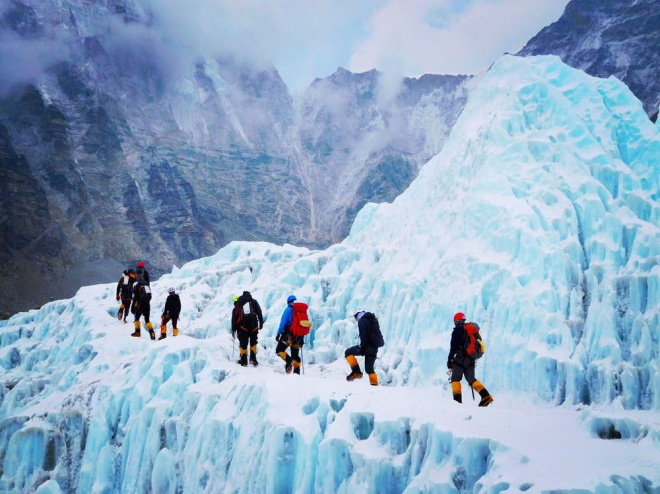
Mt. Everest is not only one of the tallest mountains on earth, it’s also one of the deadliest. Since 1977, the mountain has taken at least one life every year. That’s a lot of unrecovered and frozen bodies while getting to the summit. To make the best out of a bad situation, the fallen climbers have been put to good use. Basically, they have been helping out other climbers find their way.
It’s rare for a dead body on Mt. Everest to be brought back down. It’s even more rare for anyone to move these bodies at all. While it may sound disrespectful for some, the climbers actually use them as waypoints to get around the mountain. It’s rather macabre thinking about how the waypoints are really just dead bodies, but on the bright side, we’re sure that lives have been saved thanks to these waypoints.
4. It’s Getting Higher Each Year
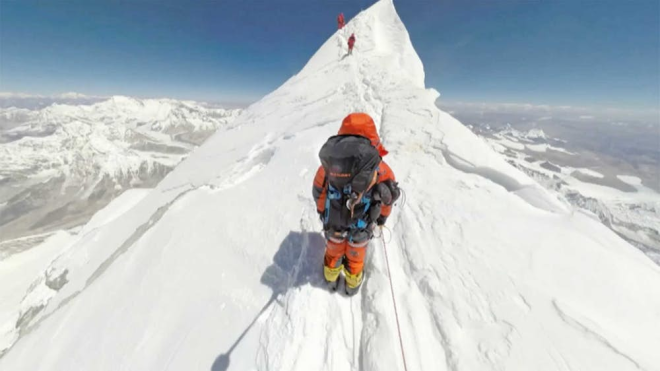
The official height of Mt. Everest was previously settled at 8,848 meters, or 29,029 feet. That’s a very tall climb already, but there are other things that future climbers should worry about. It’s best to climb Mt. Everest as early as one can because the summit will only get higher and higher. Thanks to geographical forces deep underground, the climb up Mt. Everest will be a little bit longer each year.
In 1994, a research team discovered that Mt. Everest continues to grow approximately 4 millimeters per year. According to the researchers, the Indian subcontinent that collided with Asia to form the Himalayas is still moving, and this movement is causing the mountains to go even higher. The height of Mt. Everest has been kicked up to 8,850 meters. While that’s just a fairly small jump, just think about how tall the mountain will be centuries from now.
3. The Khumbu Icefall
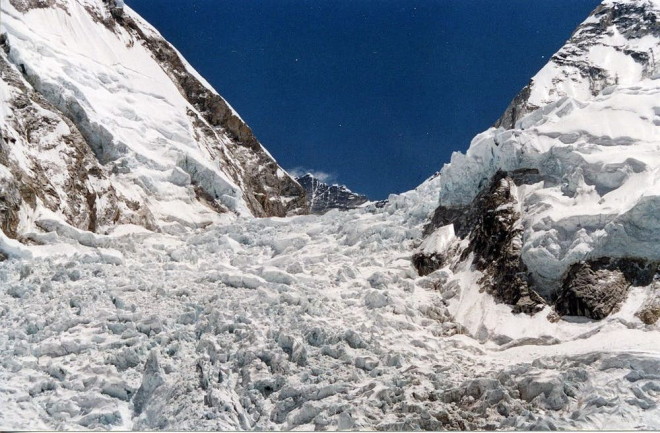
There are many reasons one could die on Mt. Everest, but since the mountain is better known for the insane temperatures, lack of oxygen, and strong winds, everyone tends to forget that the path to the summit itself is dangerous and deadly. Mt. Everest has been subdivided into areas, one of which climbers know to fear the most: the Khumbu Icefall.
Simply put, the Khumbu Icefall is a river of ice that is melting. It’s the most dangerous section on Mt. Everest and many climbers have lost their lives in this area. Forty-four deaths have been attributed to the Khumbu Icefall. The fast rate at which this giant glacier moves makes it hard for climbers to pass by it. Climbers feel a sense of relief once they pass by the Khumbu Icefall. Then again, it’s just a small fraction of Mt. Everest.
2. Ghosts On The Mountain
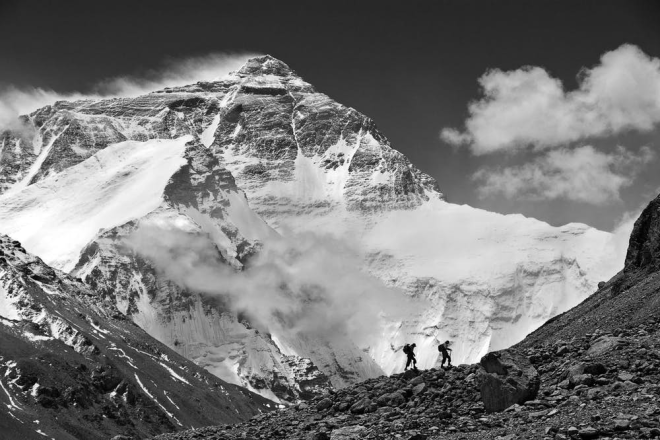
With over 200 deaths on the mountain, one would think that the natural forces of Mt. Everest would be enough to scare off any would-be climbers. Surprisingly, there have been several accounts of paranormal activity on the mountain, and many sherpas have reported strange figures in the mountain’s summit. Seriously, with its history, we’re not surprised that there are ghosts on Mt. Everest.
In the 1930s, climber Frank Smythe reported encountering two presences on the mountain. One of the spirits he encountered was so real he decided to offer it something he’d brought along for the trip. To date, sherpas and climbers tell tales of seeing something not human on the mountain. We’re lucky that the spirits that roam the mountain aren’t evil, so we don’t have to deal with them anymore.
1. But It’s Not Even The Toughest Mountain To Climb
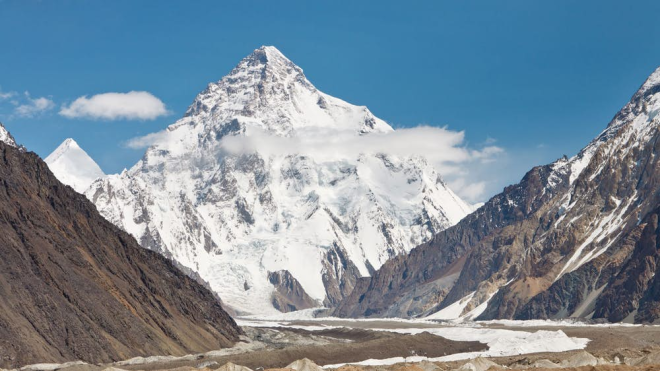
If one is looking to challenge themselves by climbing one of the tallest mountains, then Mt. Everest will surely provide a decent challenge. When asking mountaineers what they think the toughest climb is, many won’t answer Mt. Everest. Despite the popular belief, Mt. Everest isn’t the toughest mountain to climb when considering a couple of things.
For many climbers, they consider Pakistan’s K2 a bigger challenge. For starters, getting to the mountain itself is a challenge. Getting a visa to Pakistan isn’t a walk in the park. Another tough part of K2 is that climbers will have to climb a glacier! However, what makes K2 so hard is the fact that it’s a slope from top to bottom, so climbers will be exerting a ton of effort all throughout. Sure, Mt. Everest is taller, but K2 is a lot tougher and more punishing.
